-
Advisory Panel



Originally Posted by
Claven2

usmc issued rifles
Rifles of all patterns are described as best records of witness can. They show where the weapon was issued if possible but there are many gaps in series. Thus he says "No hit"...meaning no record of your rifle number.
-
Thank You to browningautorifle For This Useful Post:
-
02-28-2025 06:41 PM
# ADS
Friends and Sponsors

-
Contributing Member



Originally Posted by
Claven2

What is SRS?
Rifle is in
Canada
, if not obvious. There is no cache here for usmc springfields vs any other 1903, I think it’s unlikely anyone up here would bother to fake such a thing.
Apologies - I thought with the frequency of requests from folks asking to look up their serial number the SRS books were common knowledge. There are 4 volumes. Here is a very good description of what they are, where they came from, etc.
https://www.gunboards.com/threads/sp...-they.1192966/
In a sentence or two, some people (see the link above for who) spent years combing through national archives and/or other document sources, and whenever they saw a serial number they made note and summarized its source in tables. The 4 volumes, long out of print, fetch very hefty prices on fleabay. I just happened to finally acquire all 4 volumes this year this a very nice guy at an even nicer price.
-
The Following 2 Members Say Thank You to ssgross For This Useful Post:
-

Originally Posted by
ssgross

Apologies - I thought with the frequency of requests from folks asking to look up their serial number the SRS books were common knowledge. There are 4 volumes. Here is a very good description of what they are, where they came from, etc.
https://www.gunboards.com/threads/sp...-they.1192966/
In a sentence or two, some people (see the link above for who) spent years combing through national archives and/or other document sources, and whenever they saw a serial number they made note and summarized its source in tables. The 4 volumes, long out of print, fetch very hefty prices on fleabay. I just happened to finally acquire all 4 volumes this year this a very nice guy at an even nicer price.
I have long collected a variety of Mausers, Mosins and commonwealth guns. I used to build match M14 's and have built, collected and know a lot about M1 carbines and garands. When it comes to M1903's, this is the second one I;ve ever purchased, and the first one was a stripped receiver I built into a rifle from surplus parts 15 years ago. I sold it when someone offered me good money for it, mainly because it was not my area of interest back then. I also once owned an unissued SC 03-A3. I even once owned Brophy's book on these and read it - but that was close to 20 years ago. I make no claim to knowing anything about springfields - everything I "know" about USMC 1903's I read here:
's and have built, collected and know a lot about M1 carbines and garands. When it comes to M1903's, this is the second one I;ve ever purchased, and the first one was a stripped receiver I built into a rifle from surplus parts 15 years ago. I sold it when someone offered me good money for it, mainly because it was not my area of interest back then. I also once owned an unissued SC 03-A3. I even once owned Brophy's book on these and read it - but that was close to 20 years ago. I make no claim to knowing anything about springfields - everything I "know" about USMC 1903's I read here:
https://usmcweaponry.com/pre-war-wwii-usmc-m1903s/
https://www.americanrifleman.org/con...l-1903-rifles/
But one thing I am 100% certain of, this rifle is not wearing an 03-A3 stock with faked grasping grooves. It is not inlet for the handguard retainer, for one thing. It has been heavily scraped or sanded at some point, but I would expect that of some sort of armory rebuild.
I should also mention, the trigger guard screws were factory staked when I got it, I did tear it down for inspection & cleaning (LOTS of cosmo below the wood line), and I had a bear of a time getting them loose without damaging the screw slots.
Союз нерушимый республик свободных Сплотила навеки Великая Русь. Да здравствует созданный волей народов Единый, могучий Советский Союз!
-
Thank You to Claven2 For This Useful Post:
-
Contributing Member



Originally Posted by
Claven2

the trigger guard screws were factory staked
I have never seen a 1903 with staked screws, only read of the practice, but it wasn't from the factory it was a modification.
https://usmcweaponry.com/usmc-nation...-sniper-rifle/
Paragraph 7: "Trigger housings would be filed to fit their actions, and trigger housing screws staked in place. Screw staking would be another practice from rifle team armorers that would filter down to standard Marine M1903 service rifles." Stick a micrometer on the front post of the trigger guard. I bet it's a bit shorter than the spec, which I don't have at hand.
-
-
Advisory Panel


i didnt say, faked, i said off, based on genuine USMC bolts iv seen. the grasping grooves have been added, they dont look right and are not square to the leading edge of the stock.. no Gas hole drilled on the left side, iv seen plenty of USMC mark 1s that all had the extra hole. stock could be a late Remington 1903 that someone added grasping grooves.
-
-
Advisory Panel


 here is what original grasping grooves look like, sweeping cuts at the ends and squared with the top edge of the stock
here is what original grasping grooves look like, sweeping cuts at the ends and squared with the top edge of the stock
-
-
Advisory Panel


 Hatcher Hole on a Mark 1
Hatcher Hole on a Mark 1
-
Thank You to Chuckindenver For This Useful Post:
-
I have no doubt the grooves were probably added at some point or are worn down to the point they look narrower or something, on the other side of the rifle, the groove is nearly worn away from old sanding and scraping (I'll post a pic later) but it's was originally done well with likely a ball cutter in a milling machine, and a long time ago from when this thing was being used actively given the wear and oil staining in the grooves. They have gotten well worn since then. Stock looks nothing like a late Remington to me, and has no Remington proofs, no R stamps anywhere, etc. and there's a faint ghosting of a very early US italicised inspection stamp on the left side wrist that's mostly worn away. It's not a Mk1 stock, so was clearly added at rebuild and started life on some other rifle.
What I'm reading online is only the Philadelphia depot did hatcher holes and many USMC 1903's received varying degrees of rebuild at other locations and did not get the hatcher hole. In late 42 when the Navy started to get surplus USMC rifles back, they aprently made no effort to add holes to any rifles that did not have them. I could not say if this is just a rifle that did not get rebuild in Philadelphia, but to me, it looks consistent with a rebuilt marine gun from the period - even has what looks like course and crude depot-done checkering on the buttplate.
Союз нерушимый республик свободных Сплотила навеки Великая Русь. Да здравствует созданный волей народов Единый, могучий Советский Союз!
-
-
ok, took some more photos that hopefully might help?
Reverse side grasping groove stock has been scraped enough that the groove gets shallower toward the muzzle. The centreline of the groove is parallel to the top of the stock.

Here's the side I showed before, and also, when I measure from centreline of the groove to top of stock, it's parallel. Groove gets shallower toward the muzzle, making it look crooked a little.
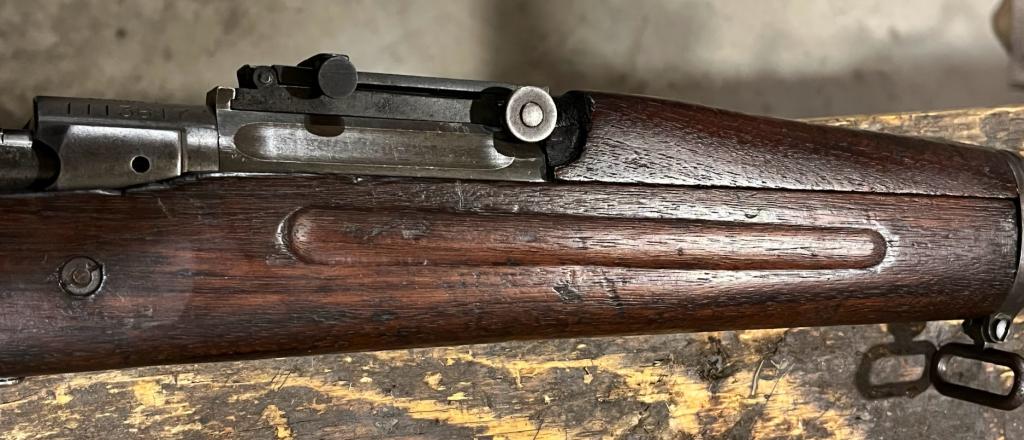
rear staked screw (still aligned):
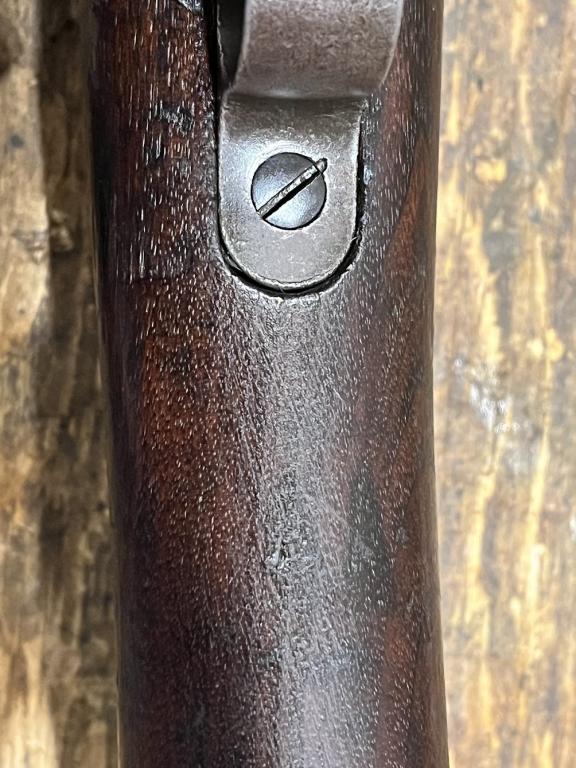
Front staked screw (no longer aligned):
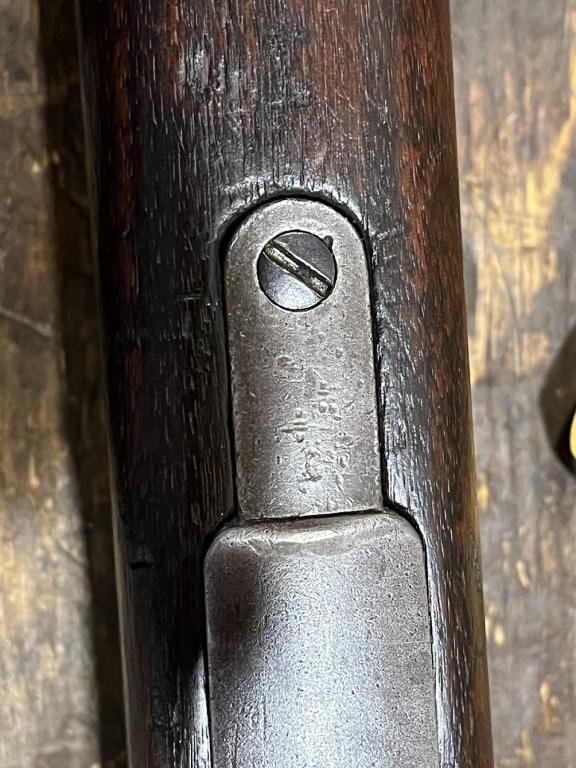
What I believe is a modified smooth buttplate (looks done on a milling machine where the vertical lines and horizontal lines don't connect on curved parts of the buttplate):
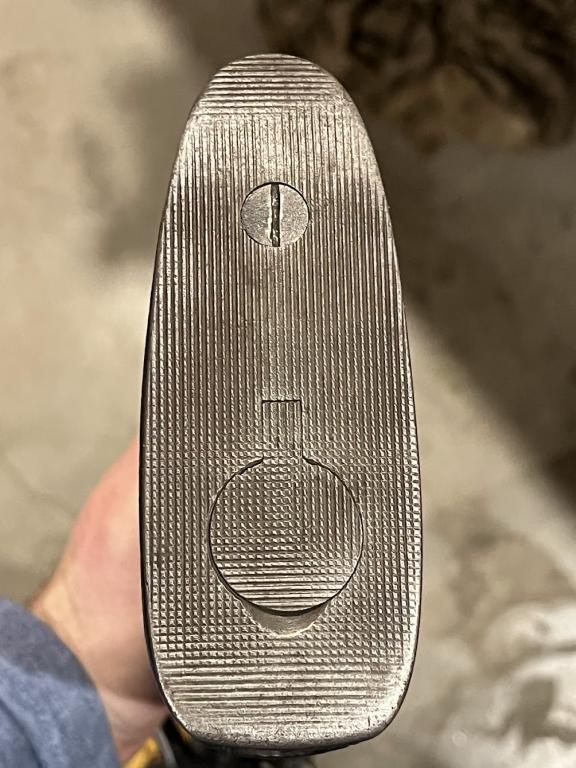
I really can't get a good picture of the ghosting on left side of wrist, but it's a rectangular outline with rounded corners and something cursive inside the rectangle.
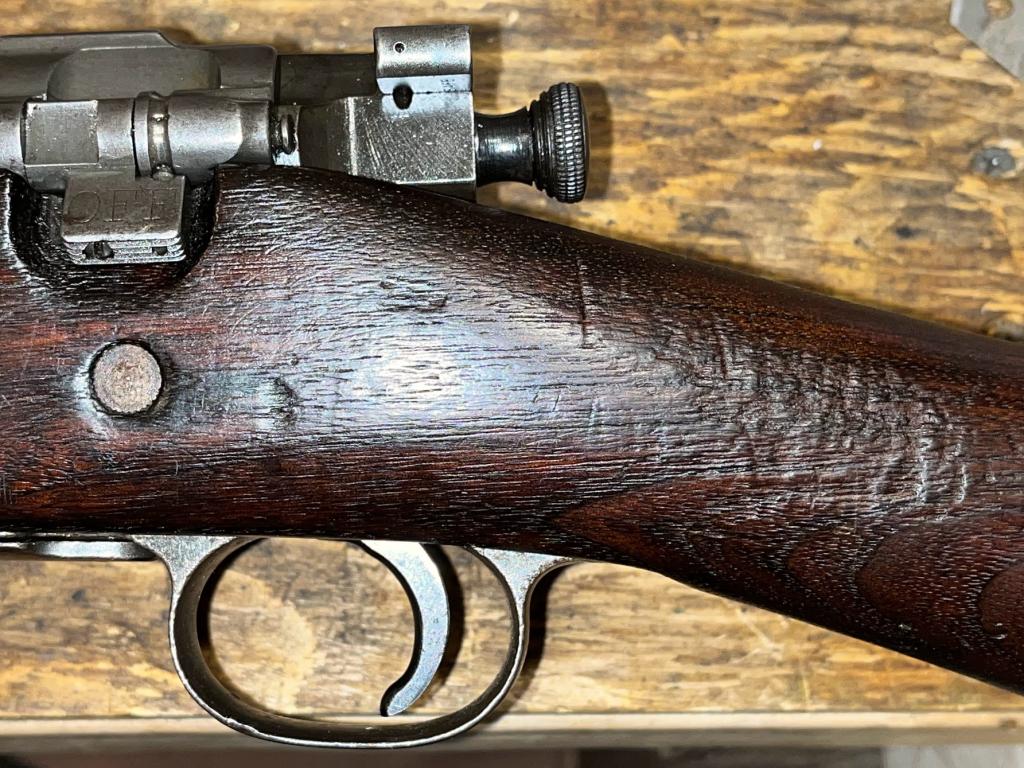
J on tip of nose. Some guy who seems well regarded on GB named "cplnorton" thinks this is associated with Sedgley when seen on 1903 stocks (J Stamp on Scant Stock? | Gunboards Forums)
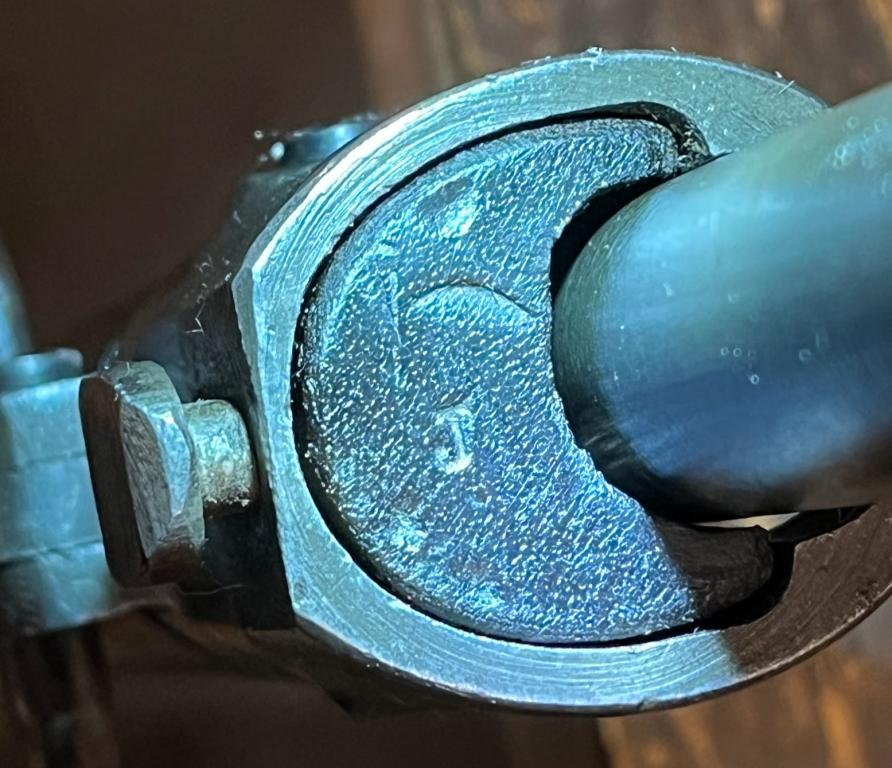
Pipe wrench marks (below woodline, it's clear the barreled receiver is light grey parkerized - definitely a zinc-based formula, not manganese:
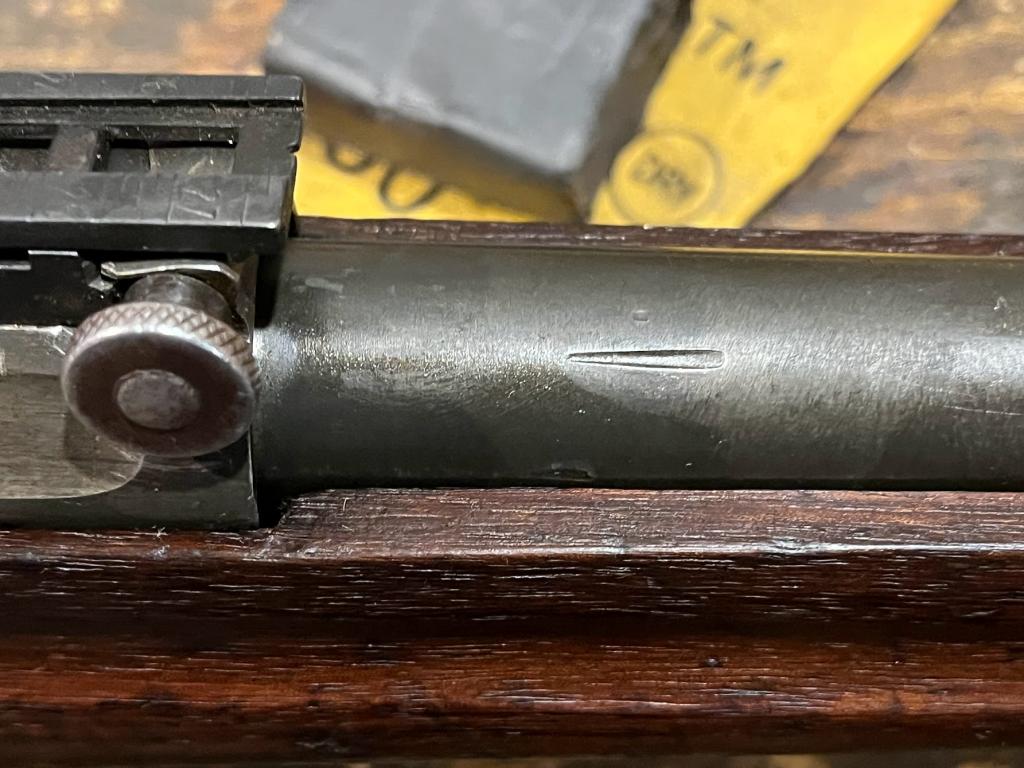
The really falling apart and seemingly refurbished (at some point) sling that was on the rifle when I found it - I know slings can be changed, but this sling had not been manipulated in decades, it literally tried to fall apart when I was carefully removing it.
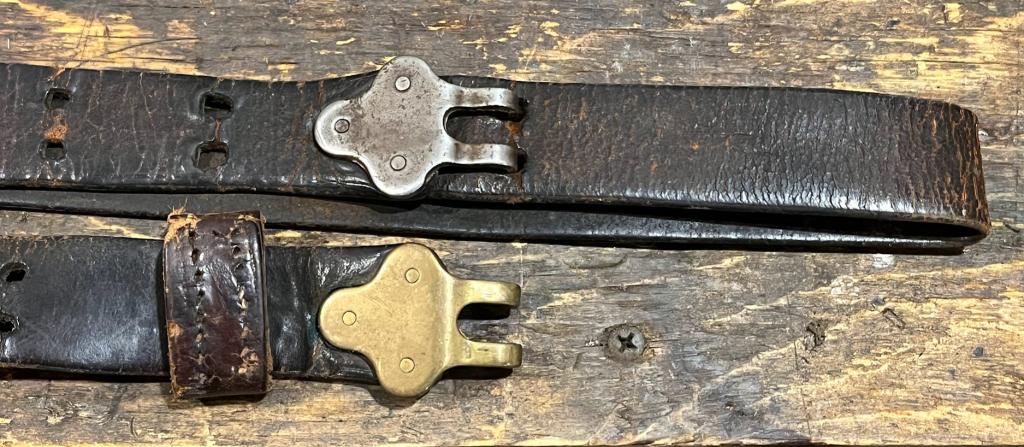

Not sure if any of this helps or not.
Last edited by Claven2; 03-01-2025 at 01:59 PM.
Союз нерушимый республик свободных Сплотила навеки Великая Русь. Да здравствует созданный волей народов Единый, могучий Советский Союз!
-
-
Advisory Panel


it has some character for sure, the light grey finish on the USMC is from them not cleaning and refreshing the tanks as much, the markings on the barrel are from a plumbers table, like a 3 legged table with jaws and what not to thread pipe, the stock is a mystery for sure, looks for sure someone has played with the grasping grooves,
every USMC rifle iv seen has had a hatcher hole, stippled buttplate, serialed bolt, and a few other things that add them up to Marine use. other then if it hit on SRS, its hard to say for sure
-
















 PM
PM



















